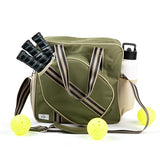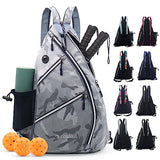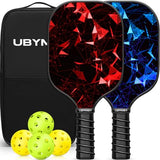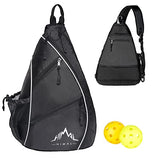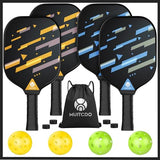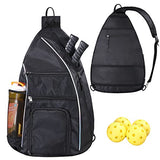Choosing The Right Pickleball Paddle 102 | Ultra Pickleball
Choosing the right paddle can be difficult, especially if you’re just a beginner. There are many factors to consider such as size, grip, paddle size and other personal preferences such as playing style. Here’s a simple guide to Pickle ball paddle selection:

Weight
In choosing paddle weight, one must consider the players: Age, Strength and Paddle Head Speed.
It’s the most important factor when choosing a paddle, weight range from 6 oz. to 12 oz., most common would be a range between 7 oz. to 8.5 oz. range.
Lighter does not always mean better, but this ultimately boils down to your age, strength, skill level and whether you have any pre-existing injuries.
A heavier paddle will help you drive the ball, but will provide less control of the ball, conversely, a paddle that is too light may not provide enough drive but will increase ball control. Also be aware that a heavier paddle can accelerate arm fatigue and joint strain.
A weaker player can sometimes benefit with a heavier paddle that has a higher deflection, making the ball travel faster and further with less effort. Power and tennis players will feel more comfortable with a heavier paddle, balanced or top heavy. Some players use a heavier paddle in singles matches to get power shots to the baseline, and also use a lighter control/touch paddle in doubles matches.
Paddle Grip
-A few things to consider when selecting the proper Pickleball paddle handle/grip are: Handle Length and Grip size/style.
Handle Length:
A longer handle length will shorten the paddle face. Former tennis players that are prone to using two handed back hand returns may consider playing with a longer handle paddle. Some players state the longer handle gives them more paddle balance.
Handle Grip:
There are two types of grip styles - thick and thin. A thin grip handle paddle is best for smaller hands... taking into consideration control and comfort. A thick grip handle offers more comfort and may offer more control. Also, a thicker grip handle is normally cushioned... this helps to absorb some of the shock from hitting the ball. A thick grip may be best for those who are susceptible to tennis elbow or arthritis.
How to decide which grip size is best for your hand size:
1. Hold the paddle like you normally hold it while playing.
2. With your opposite hands index finger, place it between the meaty part of your hand just below the thumb and the longest finger of the hand that's holding the paddle. It should fit comfortably in this gap.
If your finger doesn't fit then your grip may be to small.
If there is a very large gap, your grip may be to large.
3. Select the best grip that gives you the best control when hitting the ball. The paddle should not slip/twist in your hand when hitting the ball. If you do select a thick grip handle that is cushioned, you may also want to "overwrap" the handle. This may help in keeping sweat from absorbing into the grip and causing it to slip in your hands.
4.Hitting Surface: Graphite or Composite? Which is which and how to select?
Hitting Surface - Graphite or Composite:
Depending on the manufacturer, graphite paddles tend to weigh slightly less. The weight difference is so small it isn't even noticeable in most of the paddles. Some players state that a graphite paddle offers them more control. Some players state the ball pops off the paddle faster with a graphite paddle. Some players prefer the composite paddle because of the popping sound that comes from the paddle when hitting the ball.
When comparing graphite and composite paddles... it's best to compare the same brand paddle side by side, ex. stryker composite with stryker graphite. It's hard to compare a graphite and composite paddle from two different manufacturers.
Aluminum Core Paddle:
Most paddle cores are made of a composite material. A composite core paddle material is made of varying material... which may include: carbon fibers, fiberglass and resins.
Aluminum core paddles are made of aluminum. Depending on the manufacturer... aluminum core paddles vary in weight and size. Aluminum core paddles are within the USAPA paddle standards.

